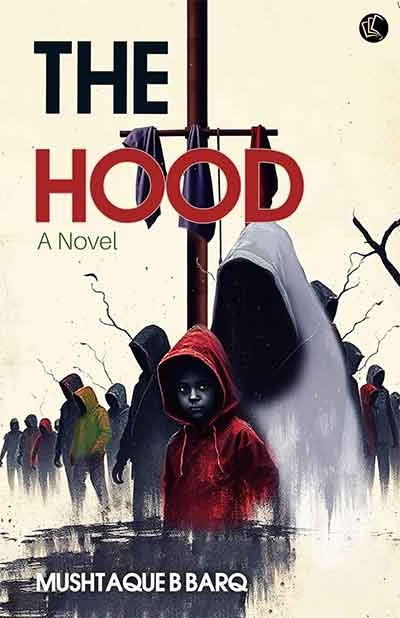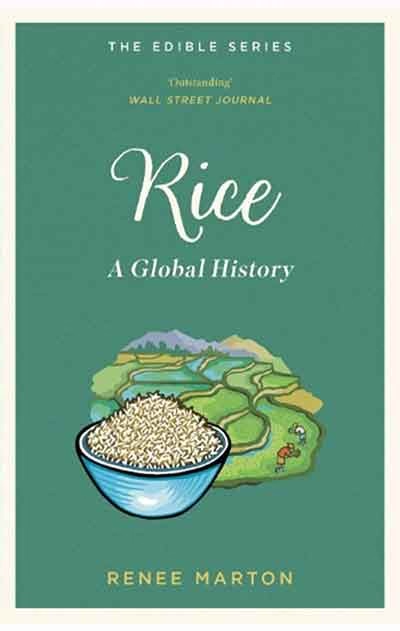The Hood is a new novel by celebrated author, columnist and translator from Kashmir, Mushtaque B Barq. Barq has introduced a new phenomenon in the story line where Hoods of various colours are an interesting happening and add sheen to the story line. In the beginning Barq introduces the Hood Land in detail.
In the masquerade of custodians, hooded men roam the heart of the city where nights are no longer significant, except for the sirens of ambulances or the barking of street dogs. Among the residents, wearing a hood is a fashion statement—a symbol of their identity. Hoods have specific uses for various occasions, but there is one universal hood, the “Black Hood.” It embodies the common narrative of the region, a place where ambulances and gunshots coexist with mysterious creatures who share their lives with human beings.

This place, called Hoodland, is situated in the southwest of two major landscapes: one raised above sea level, known as Highland, and the other, enmeshed within dense forests like a gorge, called Lowland.
An important character Rohan , a young boy is baffled as the people in the area put on hoods and he asks an apt question about wearing of hoods.
“Why do they put the hood on?” Roshan’s nine-year-old son Rohan asked him. He was new to this land, having been raised at his grandmother’s house. He had seen men in hoods. He had heard of men wearing hoods. Roshan often dismissed his unending questions, but today he seemed determined to make him speak, which he eventually did, albeit only to evade him.
Death across the globe is an incident of lament and tragedy but Barq has introduced a new and interesting significance ; it was not only celebrated but enjoyed.
Death was a significant metaphor in Hoodland. It was not only celebrated but also enjoyed, as death symbolized yet another opportunity to add a hood to the pole in the temple yard. Each year, the pole would swell with hoods to the extent that it would take hours to walk around it.
Hoods of all colors were tied to the pole as a mark of respect for those who had passed away during the year. Thus, every deceased man, woman, young, or old was seen as an additional contribution to their hood culture. Each death meant an additional hood, making the pole grow thicker and heavier—far beyond what one could imagine.
Story unfolds :
The novel ‘The Hood’ presents a dystopian society ruled by an oppressive system where individuals are identified and categorized by their hoods. The colour of the hoods are significant as it reveals the status of the groups in the society . ”A wealthy family responsible for maintaining the temple was allowed to only off-white hoods symbolizing their holiness and purity. The clergy members exclusively wore snow white hoods with a red patch………Red hoods ,in contrast, represented the working class —–teachers, labourers, doctors, and other professionals…….Orange hoods ,worn by artisans ,reflected creativity and craftsmanship ……………..Green ,reserved for scholars, poets, and authors was a symbol of growth ,intellect and the cultivation of knowledge ………purple ,the colour associated with grave diggers ,undertakers (pages 7,8,9).
The story line follows Roshan, his wife Radhika and their son Rohan , a boy with extraordinary yet tragic ability—he can predict deaths. ” Roshan’s nine year old son, Rohan ,suffered a serious head injury at birth when he slipped from the doctor’s hands in the labour room”(Page 12)
Rohan , suffering from a severe neurological condition since birth ,undergoes surgeries that seem to awaken a supernatural gift. His mother ,Radhika , sees his powers as both a burden and a blessing ,struggling with the ethical dilemma of whether to harness them for personal gain or protect her son from exploitation . Meanwhile , Roshan , a devoted father , endures societal humiliation and personal sacrifices to ensure his son’s well-being.
Radhika challenges the rigid traditions of the Hood Land ,where authority is dictated by the Pole authorities ,and any defiance leads to dire consequences .Her act of resistance –removing her hood ,sets off a chain of events leading to a brutal trial ,exposing the hypocrisy and injustice of the ruling class .
As the novel unfolds ,Rohan’s visions become increasingly intense ,foreseeing the tragic fates of people around him, including his own family . His father , torn between loyalty to his wife and fear of the system ,struggles with his role in a crumbling society .The climax is marked by a desperate confrontation with the authorities ,revealing the deep corruption and manipulation within the ‘Hood Land’. The corruption runs deeper in the framework of literary and artistic awards where deserving ones are ignored , the mediocre are pushed up. ‘Sign the agreement’ is an exceptional rule prevailing in the Hood Land . “Mr.Girish, this is how things work in Hood Land .Every awardee in the past has signed an agreement. You are not alone.”(page 94).
Ultimately , The Hood explores themes of oppression ,resistance ,fate, and the cost of challenging deeply ingrained societal norms .It is a haunting reflection on the struggle for justice in a world that thrives on fear and submission.
Conclusions :
Mushtaque Barq studied through his previous scripts and the present one comes up like a craftsman who plays with words . He weaves fantasy, prophecy, and pattern into a richly layered script in this novel. Following lines explain how each of these elements function in the story:
Fantasy in The Hood is not used for escapism but as a metaphorical and symbolic lens to critique real-world issues, especially those related to identity, power, and systemic control.
The use of Hoodland is a fictional geographical area where imaginative entities like the Highland and Lowland provide existing residencies to the people residing there.
The hoods of various colours worn by individuals are fantastical in their societal purpose, functioning like magical identities that declare one’s social role, class, and fate.
The Black Hood, in particular, evokes an aura of mysticism, symbolizing suffering, loss, and shared trauma in a militarized or conflict-ridden land.
Supernatural elements like Rohan’s prophetic ability to foresee deaths deepen the fantasy and surrealism of the narrative, blending medical reality with mystic prophecy.
Prophecy is central to the plot, both literally and thematically.
Rohan, born with a neurological trauma, develops a supernatural gift of foreseeing death. His character resembles the mythical seer archetype—a super human whose knowledge is both a blessing and a curse.
His visions guide the story’s trajectory and reveal the hidden rot in Hoodland’s social and moral order.
His mother, Radhika, interprets these prophetic visions not only as personal burdens but as keys to disrupting an unjust system.
Prophecy here symbolizes foresight and resistance—the knowledge of coming doom, and the courage (or despair) to act upon it.
Pattern operates on multiple levels in The Hood—symbolic, structural, and societal.Color-coded hoods create a rigid caste-like hierarchy. The Pole—where hoods of the dead are tied—grows with every death, physically manifesting the accumulation of suffering, memory, and conformity.
The moment of agreement-signing for awards (e.g., Mr. Girish on page 94) exposes another pattern: institutional corruption. Here, success is systematically bought, not earned.
- Structurally, the novel’s unfolding—beginning with innocent curiosity (Rohan’s question), moving to personal awakenings (his powers), then societal rebellion (Radhika), and finally tragic confrontation—follows a classical pattern of dystopian resistance.
In Essence Fantasy gives the narrative a symbolic space to question reality, Prophecy drives the emotional and narrative core through the young Rohan’s visions and Pattern highlights the mechanisms of oppression and conformity that define the society of Hoodland.
Finalthought
The Hood is not just a dystopian fantasy—it’s a political fable. Through allegorical storytelling, Barq critiques authoritarianism, social stratification, and the silence imposed on truth-tellers. It’s both an imaginative parable and a sociopolitical mirror, uniquely grounded in the realities of conflict zones.
I am of firm belief that Barq with this new novel, will receive accolades for the enchanting story and the plot.
Subscribe to Our Newsletter
Get the latest CounterCurrents updates delivered straight to your inbox.
Shafi Ahmad (Shafi A Athar) is the Author of the novel “The Half Widow “ and president Fiction Writers’ Guild , Kashmir. He can be mailed at [email protected].













































